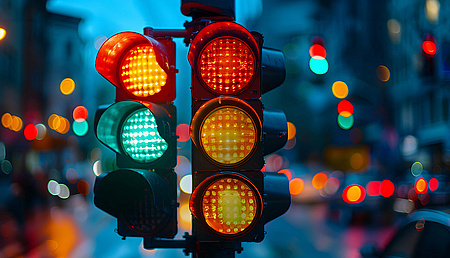
How do you create a winning brand protection strategy?
Your brand is your business identity. Keeping it safe against copycats, counterfeiters and competitors is vital to the viability and success of your enterprise. Whether your organization is a multinational corporation or a fledgling startup, without a solid protection strategy in place, your company's brand image is vulnerable to misrepresentation, tarnishment and even a lack of definition and consistency.
A robust brand protection strategy is built upon a foundation of Intellectual Property (IP) rights and the awareness of how best to employ them. We examine how this can be achieved, why it is needed and what impact it has on an organization.
The basics: What is a brand protection strategy?
To maintain the integrity and reputation of your deliverables, there are a series of actions you can and should take. First and foremost, you need to secure your goods and services with trademarks in all jurisdictions where you operate. Doing this will ensure the recognizability of your brand's offerings and reinforce any perceptions customers develop. However, even a registered mark is not immune to trademark infringement, and there are multiple ways an IP portfolio can be impinged upon, each to the detriment of the brand owner:
-
Counterfeiting of products or designs
-
Patent infringement
-
Copyright infringement and piracy
-
Rogue websites that impersonate, hijack or besmirch others
-
Trademark squatting — where a trademark is registered in bad faith, usually to extort from legitimate operators in the future

After going to great lengths to create your services and cultivate a positive brand image, trusting your new business to the whims of the international marketplace without IP protections puts all your previous efforts on the line.
Needless to say, with so many avenues for bad actors to abuse a brand and its image, there are a number of preventative and protective measures you can take to counteract them. With a firm bedrock of IP rights and a rigorous enforcement policy, you can protect your brand equity in the real world and online.
The need for brand protection
The fashion industry is – unfortunately – an excellent demonstrator of the IP perils faced by prominent labels. In this case, cheaper brands, sometimes referred to as "fast fashion," imitate the designs of industry leaders to capitalize on distinctive, popular looks. Litigation is frequent and often costly in the sector as parties fight tooth and nail to defend their most valuable assets. As an example, in 2017, U.S. clothes retailer Forever 21 preemptively filed against Italian design house Gucci to cancel the latter's trademarks for blue-red-blue and green-red-green stripes on fashion items. Though a confidential out-of-court settlement was reached the following year, the fact Gucci maintained its registered trademarks can only be interpreted as a success for the boutique. As with other luxury brands, the prestige of a design house like Gucci is a huge part of its value, so to have its distinctiveness diluted by poorer-quality imitators diminishes its reputation as a status symbol and style icon.
Not only is open competition fierce, but the impact of black-market sales on genuine brands in almost every industry is undeniable and severe. According to a 2019 report published by the Organization for Economic Cooperation and Development, fake goods made up 3.3% of 2016's world trade, or roughly $500 billion USD. This is a tremendous amount of illicit trade — not to mention a great deal of revenue for official brands to be missing out on.
Benefits of brand protection strategies
Trademark registration and design patents allow you to keep a firm grip on the reins of your IP and implement anti-counterfeiting measures such as digital watermarks, QR codes and other tracking systems. Being able to verify your genuine products ensures your brand reputation is not blackened through misrepresentation or confusion with inferior products or services. By the same token, you will have clear avenues for legal recourse in the event you discover an infringement of your registered rights.

Clothing and footwear are two of the most prominent targets for counterfeiters. In the 2021 fiscal year, the total value of these types of fakes seized in the United States was estimated at $588 million USD.
Going beyond the online sale of counterfeit products, the virtual impersonation of entire brands — known as "brandjacking" — is an illicit industry and a real threat to every legitimate owner. Whereas fake products simply imitate the genuine article, brandjackers seek to siphon off trade from their targets by replicating marketing content and other customer-facing material. Thus a winning brand protection strategy will incorporate tactics, services and software that proactively address the threat of online brand abuse.
There are some instances where the preventative measures of a comprehensive brand protection strategy are especially worthwhile. In the case of medicine, for example, keeping bad actors from distributing a fake product may protect customers from serious ailments or even death. In 2021, the World Health Organization issued nine serious medical product alerts related to falsified drugs and tests, five of which were related to COVID-19 vaccines and treatments. The counterfeiting of medication can have severe effects on more than just brand reputation and therefore warrants the most stringent action to minimize its occurrence and any possible liability.
Key challenges
The post-lockdown boom in online shopping and the increasing skill of counterfeiters in creating more passable forgeries have resulted in a serious uphill struggle for brand owners. What is more, taking action against infringers typically is not a matter of chasing each and every potential case since there will be a varying scale of severity and viability, and litigation is inevitably costly in time, money and employee resources. Instead, taking strong legal action against the most serious offenders delivers the best chances of a cost-effective victory – and of recovering suitable damages – and serves to discourage further would-be perpetrators.
However, counterfeiters often operate as part of larger criminal organizations and / or out of jurisdictions with weaker IP enforcement regimes. Seeking recourse for international IP infringement in civil cases can be further complicated by the fact that cybercriminals can disguise their location by using virtual private networks (VPNs). All too often, disrupting the supply chain of fraudsters and limiting their ability to commit their crime of choice requires a concerted effort from national and multinational law enforcement agencies.

Though tackling criminal operations head-on is a task for law enforcement, companies and private individuals can play a key role in alerting the proper authorities of infringing activities. Thus routine IP monitoring is vital to maintaining a healthy market.
As the sophistication of counterfeiters and digital malefactors has accelerated and increased, so too has the need for additional customs agents and other government officials to reduce the opportunity for these illicit activities. This final hurdle is one that is entirely beyond the control of brand owners, regardless of the proficiency of their legal and IP teams.
Taking effective action
Without exception, registering your IP is at the core of any brand protection strategy. While there are many aspects of a business's IP portfolio that obviously need to be protected — your logo and brand name, for example — it can be easy to overlook some of the more commonplace assets you use, including general-consumption media. Photography and videography, print advertisements, radio spots, television commercials, social media posts and written content all constitute a part of your brand identity. As we have seen, brandjackers may attempt to leverage this material to their own ends, so it is essential to guard your copyrights vigilantly as well.
However, having all of your intangible assets registered and suitably recognized as a part of your brand is not sufficient for the long term, as your portfolio, marketing campaigns and business locations are not static. As such, your brand protection strategy needs to adapt to your own evolving situation and corporate goals. Comprehensive IP protections lay the groundwork for a solid brand protection strategy, which can be plotted to meet the particular needs of your organization. Enlisting expert help from an IP service provider not only takes the weight off your internal teams, but it comes with the assurance that your brand protection strategy will be properly executed now and in the future.
Brand protection strategies often require a multidisciplinary approach, combining the expertise of legal professionals with the business insights of industry consultants. As an IP full-service provider with global reach, Dennemeyer houses all the experts you need under one roof. Take advantage of the vast stores of knowledge and experience at Dennemeyer & Associates to protect your brand in the real world and online.
Filed in

Slight variations in evidence can lead to vastly different outcomes in disputes — and prior decisions cannot be relied on as indicators of success.



